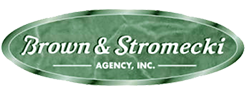According to the Federal Emergency Management Agency, 99% of counties in the U.S. experienced flooding between 1996 and 2019 and many of those affected were not in areas traditionally associated with floods, The Washington Post recently reported.
Property owners in those areas have found that their homeowner’s or renter’s insurance policies did not cover the cost of flood damage, forcing them to pay out of pocket. It’s a growing problem due to climate change and will require more homeowners outside of flood zones to consider whether they need coverage too.
The National Flood Insurance Program, which FEMA administers, is the country’s primary source of coverage. While more private insurers have begun offering flood insurance, the NFIP remains the largest provider.
Homeowners whose properties are located in FEMA-designated flood zones (areas that have a 1% chance of flooding in any given year) are required to carry flood insurance by their mortgage lenders.
The problem is that the maps are not accounting for the new unpredictable weather we are experiencing, which is leaving homeowners, prospective buyers, renters and cities unaware of the potential dangers they face and which insurance they should buy.
What flood insurance covers
An NFIP policy covers buildings, including attached components in basements, and personal non-building property. You may purchase coverage on the building only, the personal property only, or both.
It also provides small amounts of coverage for the costs of removing the debris left by a flood and taking loss-prevention measures. These include placing sandbags around the building and removing property to safety when a flood is imminent. Finally, it covers some of the costs of making repairs in compliance with updated building codes.
By law, the most insurance available is $250,000 for a home and $100,000 for personal property inside it. The maximum available for a business building is $500,000, and also $500,000 for personal property inside it.
The insurance will usually pay the cash value of buildings and personal property. It may pay the replacement cost of a dwelling in limited circumstances.
What it does not cover
There is no NFIP coverage for personal property outside a building, such as grills or picnic tables. Open structures such as boathouses are also not covered.
It does not cover automobiles or recreational vehicles; cash; trees, shrubs or plants; and personal property in basements, other than portable air conditioners, freezers and the food inside them, and washers and dryers.
There is also no coverage for non-damage expenses that result from a flood, such as the additional cost of living elsewhere during repairs or loss of business income.
Deductibles
Unlike other property insurance policies, separate deductibles apply to the building and the personal property. Both deductibles will be subtracted from the loss settlement.
For example, if a flood caused $50,000 damage to a home and $20,000 damage to personal property, the deductible ($500, for instance) will be subtracted from both numbers when the insurance benefit is calculated.
A final word
Many insurance companies issue flood policies on FEMA’s behalf, so you may be able to purchase it from the same company that provides your homeowner’s, renter’s or commercial property insurance. Also, your risk of flood damage may be greater than you think.
If you are concerned, ask us about flood insurance for your property.
